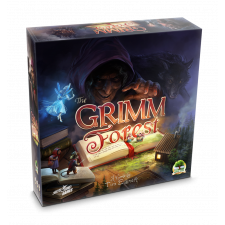The Grimm Forest Review
on Mar 29, 2018
Critical Hits: Fun, fast, simple and sometimes surprisingly cutthroat; highly social and interactive; tremendous production values; culturally inclusive.
Critical Misses: Resource tokens are pretty boring, 2 player game feels a little anemic.
The Grimm Forest, a new title by Tim Eisner (March of the Ants) is full of pure delight with its fairy tale setting, over-the-top production including excellent miniatures, and simply fun gameplay with a bit of a mischievous take-that angle. This is an all-ages resource collection and building game that doesn't over-extend its reach and is sure to provide a lot of laughs and smiles across the table. I'm sort of unreasonably smitten by this game, to be quite honest- even the custom component trays are magical and almost perfect.
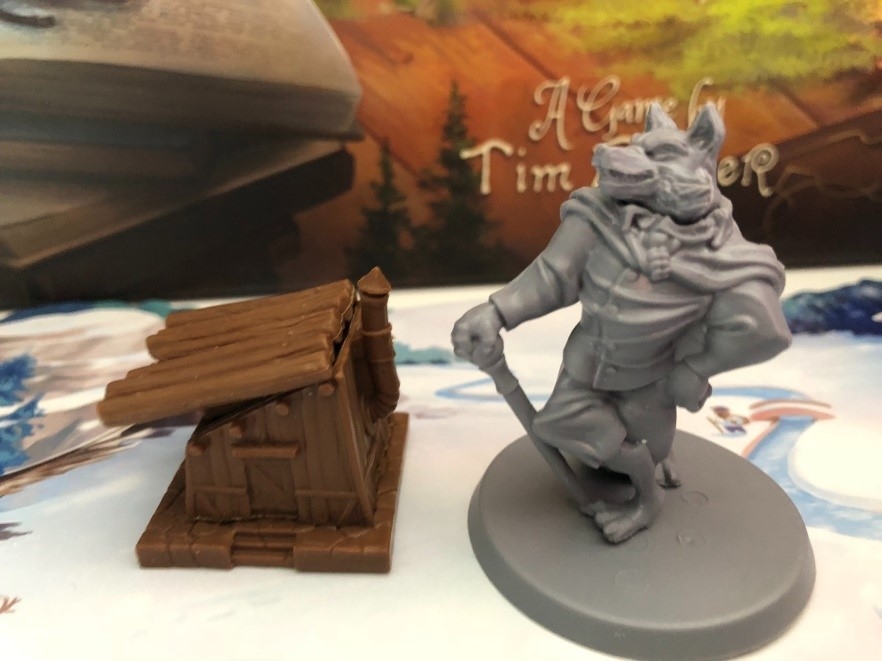
Looks like trouble!
The concept is that each player represents a pig with familial ties to the ones that built those houses that the Big Bad Wolf knocked down. Collecting brick, wood and straw (will those pigs ever learn), the pigs must build three complete houses of three components each, with each level escalating in cost. Not unlike Klaus Teuber's classic Adel Verpflichtet, the core mechanic is a simultaneous action selection mechanic. On a round, each pig secretly picks a card indicating which gathering location they are going to visit. If they wind up as the only pig there, they get all of the resources that have accrued there. If more than one pig shows up in the brickyard, forest, or fields...the whole pile is split evenly and the remainder left behind. Then, the pigs set to building their houses if they have the means or they may take two other actions, including drawing a card or getting one of any resource.
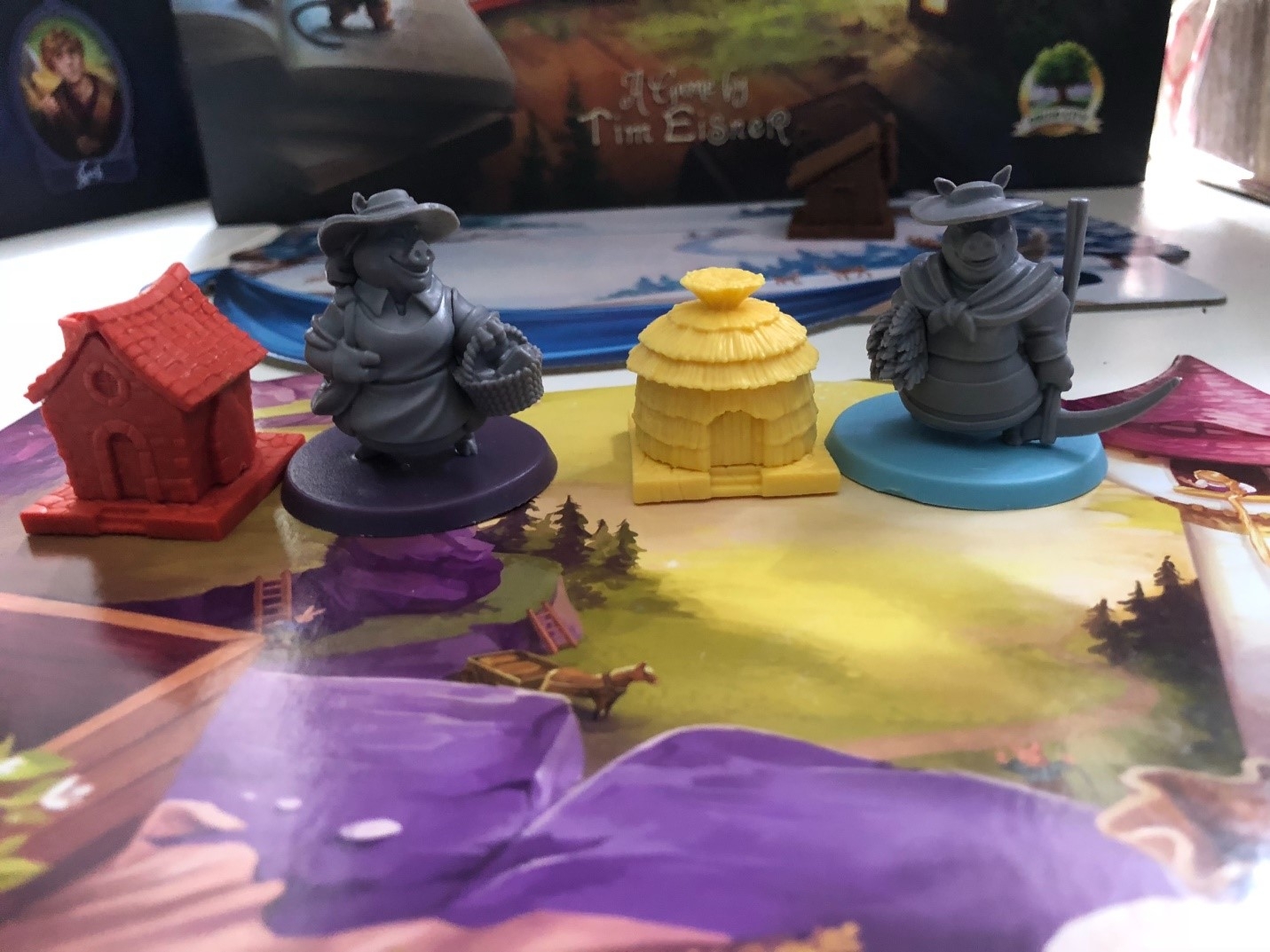
These ladies are building houses in Rapunzel-land.
This doesn't sound like a whole lot but there are two decks of cards involved. One is a big stack of Fable cards. These are played secretly at the same time you select a gathering card, and they do all kinds of fun, tricky, and downright nasty things. Some affect the pigs that showed up at your location- the usual sorts of effects such as stealing resources, switching their location cards, drawing extra Fables, getting extra resources and so forth. But there are also monsters! A fable card that has a monster- such as the Big Bad Wolf, the Bridge Troll, or even a Dragon- lets you put a giant plastic figure of said monster on a location, generally making life miserable for those pigs unfortunate to wind up on the same spot.
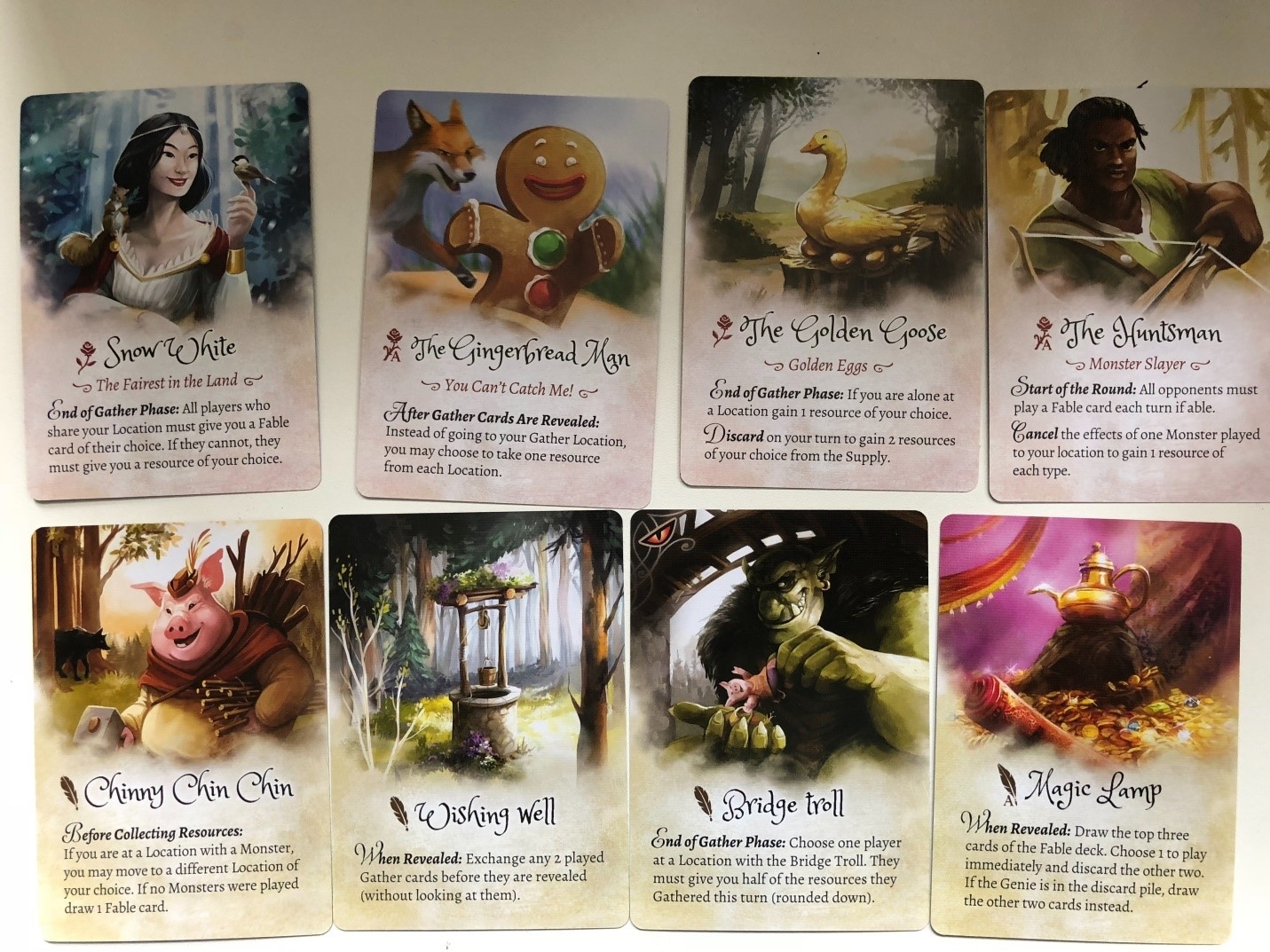
Friends and Fables
The other deck is composed of Friends. You earn these when you build the 2nd level (walls) of a house. Virtually every major fairy tale (or Disney) character you can think of is here. Aladdin, the Gingerbread Man, Pinocchio, Sleeping Beauty, Little Red Riding Hood, and Snow White come to your aid. Friends give you an ongoing special action, ability, or benefit but the catch is, you can only have one at a time and they are subject to getting squished by the Giant. What is especially interesting is that you can GIVE another player a friend, and that is part of where this game gets exceptionally good.
You see, if you are playing this game quietly selecting locations, going there, maybe playing a card, and then going back with your materials to build a roof or whatever...you are doing it wrong. This is a game that requires players to get involved and talk. You might try to lure players away from a big pile of resources by suggesting that you might have the Big Bad Wolf in your hand. You can negotiate agreements to not mess with each other's collection efforts...and then do exactly that. Or, as suggested above, you can offer a desirable Friend card in exchange for assurances that the Bridge Troll won't be played in the forest or wherever you are going. The fun is in trying to maneuver your way into big resource gains while also playing the take-that cards on others- while, of course, avoiding theirs.
This means, of course, that The Grimm Forest is impacted by the "more the merrier" equation. Two player games are decent enough to play if you just can't get a third, but the automated die roll for the proxy third player doesn't barter or negotiate. Three player games are great, but having that fourth player means just that much more friction. With four you also add a fourth gathering board, a market, where players can get resources of more than one type.
I've played this game with my young kids (6 and 8) and with some help on the cards, they loved it. They weren't nearly as nasty and vindictive as my more gamer-ly friends of course but I had an equally good time playing it with them as with my older peers. Everyone I've shown this game to has been impressed with its ridiculous production quality and excellent illustrations, and everyone has enjoyed the sweet-and-sour tone of the game. But I would advise that those looking for a deep, thinky, strategic game where everything goes according to plan should steer away from this game because it simply is not that kind of game. It's light stuff, and it goes down in 45 minutes.
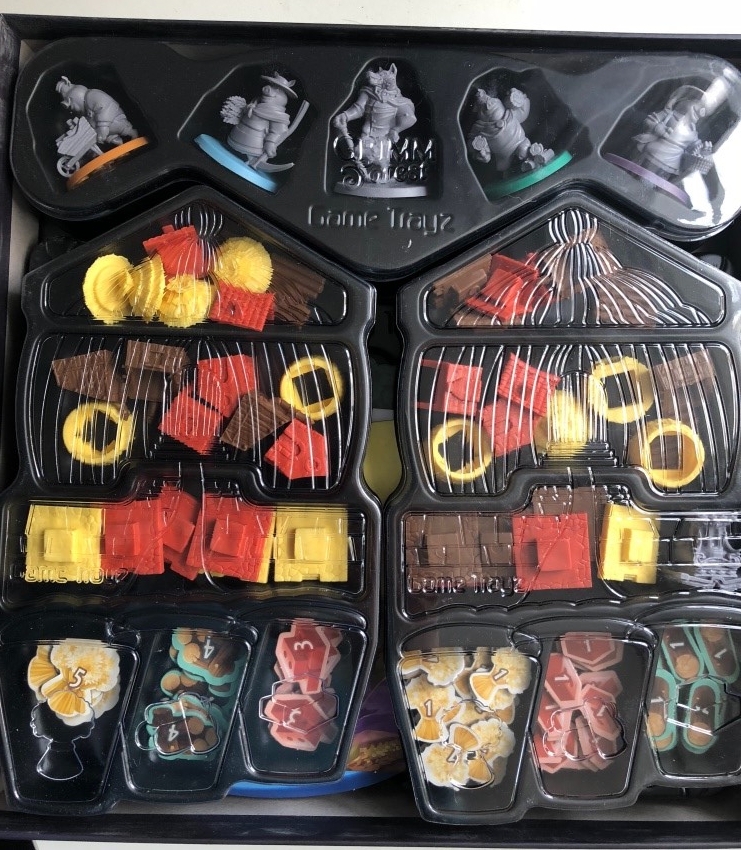
Even the storage is fun!
In parting, I want to note something that I especially appreciate about this wonderful game. I absolutely love that the illustrations of many of the characters in the game depict them as people of color and of many ethnicities. Even though it is set chiefly in the world of European fable (Aladdin and Ali Baba notwithstanding), I really love that the illustrator thoughtfully and seamlessly incorporated non-Caucasian faces throughout the card art. It's an inclusive touch seen far too rarely in the hobby gaming world, and it is great to see a game for everybody positively representing everybody.
This is an excellent game and even though it's still early, I'd call it one of the year's best to date.

 Customer Support
Customer Support  Subscribe
Subscribe 




 Account
Account  Wishlist
Wishlist 
